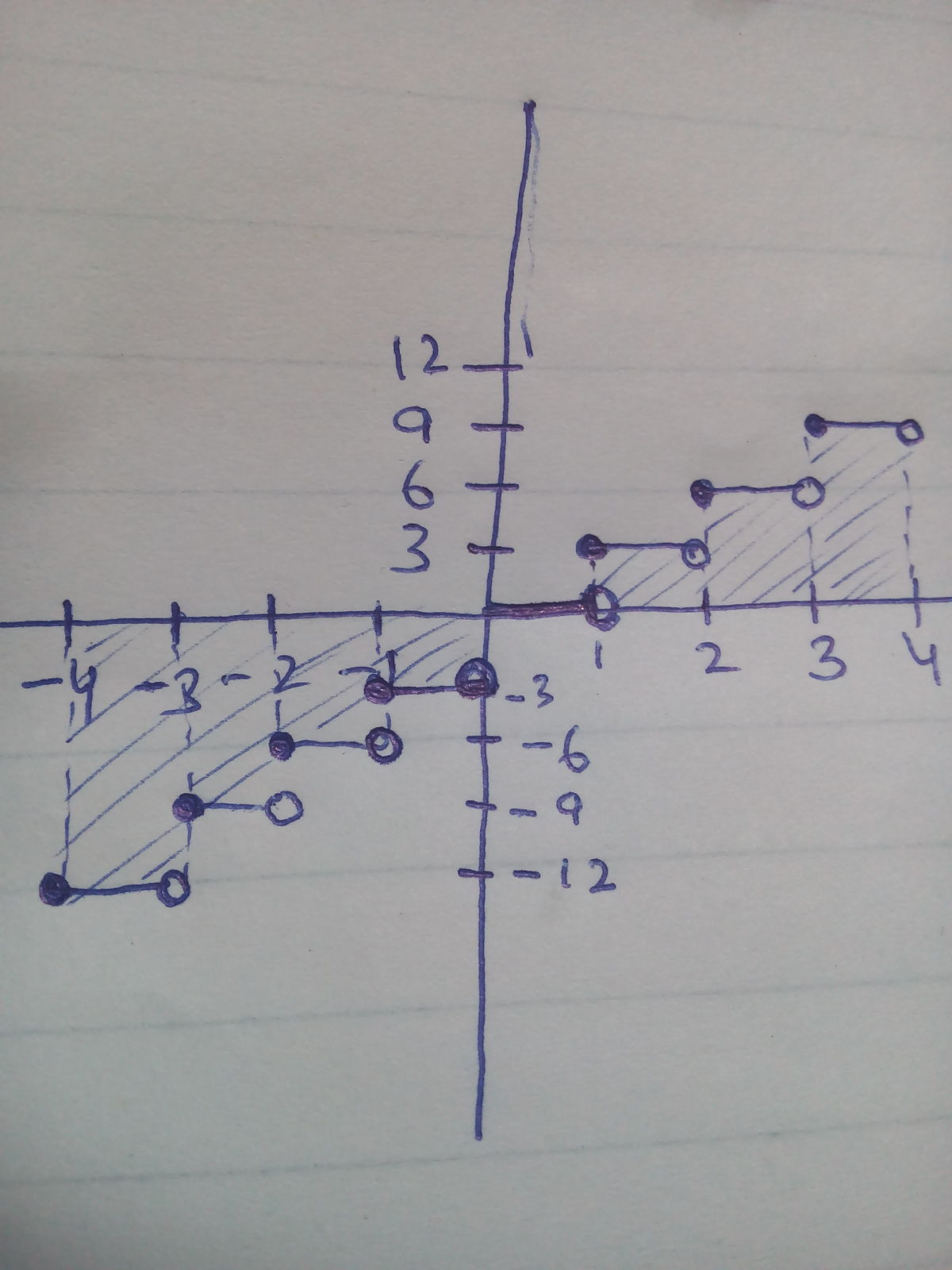This section requires Javascript.
You are seeing this because something didn't load right. We suggest you, (a) try
refreshing the page, (b) enabling javascript if it is disabled on your browser and,
finally, (c)
loading the
non-javascript version of this page
. We're sorry about the hassle.
2 solutions
Nice..... I also did the same and had drawn the graph but instead of adding area algebrically I took the mod of the area and wrongly claimed the answer 48. Extension of the beautiful solution of
@Chew-Seong Cheong

⌊ t + ⌊ t + ⌊ t ⌋ ⌋ ⌋ = 3 ⌊ t ⌋
∫
−
4
4
⌊
t
+
⌊
t
+
⌊
t
⌋
⌋
⌋
d
t
=
3
∫
−
4
4
⌊
t
⌋
d
t
Using the property,
∫
−
a
a
f
(
t
)
d
t
=
∫
0
a
f
(
t
)
+
f
(
−
t
)
d
t
I
=
3
∫
−
4
4
⌊
t
⌋
d
t
=
3
∫
0
4
⌊
t
⌋
+
⌊
−
t
⌋
d
t
=
3
∫
0
4
⌊
t
⌋
−
⌊
t
⌋
−
1
d
t
=
−
3
∫
0
4
d
t
I used the property , for t > 0
⌊
−
t
⌋
=
−
⌊
t
⌋
−
1
∴
I
=
−
3
∫
0
4
d
t
=
−
3
⋅
4
=
−
1
2
We note that ⌊ t + ⌊ t + ⌊ t ⌋ ⌋ ⌋ = 3 ⌊ t ⌋ , therefore:
∫ − 4 4 ⌊ t + ⌊ t + ⌊ t ⌋ ⌋ ⌋ d t = ∫ − 4 4 3 ⌊ t ⌋ d t = 3 ( ∫ − 4 − 3 ⌊ t ⌋ d t + ∫ − 3 − 2 ⌊ t ⌋ d t + ∫ − 2 − 1 ⌊ t ⌋ d t + ∫ − 1 0 ⌊ t ⌋ d t + ∫ 0 1 ⌊ t ⌋ d t + ∫ 1 2 ⌊ t ⌋ d t + ∫ 2 3 ⌊ t ⌋ d t + ∫ 3 4 ⌊ t ⌋ d t ) = 3 ( ∫ − 4 − 3 − 4 d t + ∫ − 3 − 2 − 3 d t + ∫ − 2 − 1 − 2 d t + ∫ − 1 0 − 1 d t + ∫ 0 1 0 d t + ∫ 1 2 1 d t + ∫ 2 3 2 d t + ∫ 3 4 3 d t ) = 3 ( − 4 − 3 − 2 − 1 + 0 + 1 + 2 + 3 ) = − 1 2